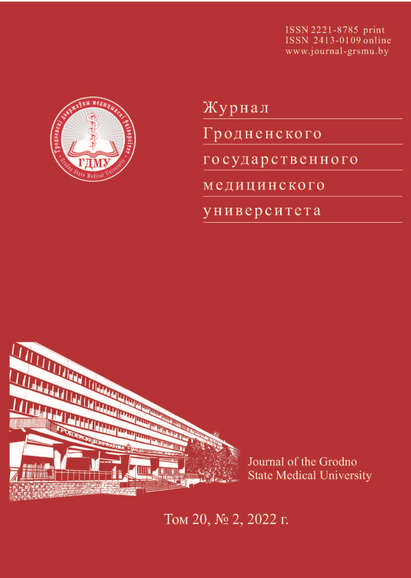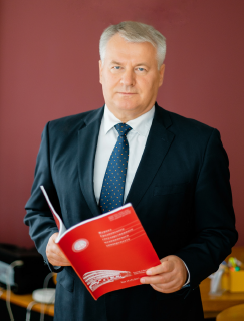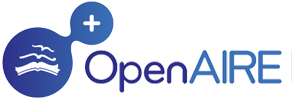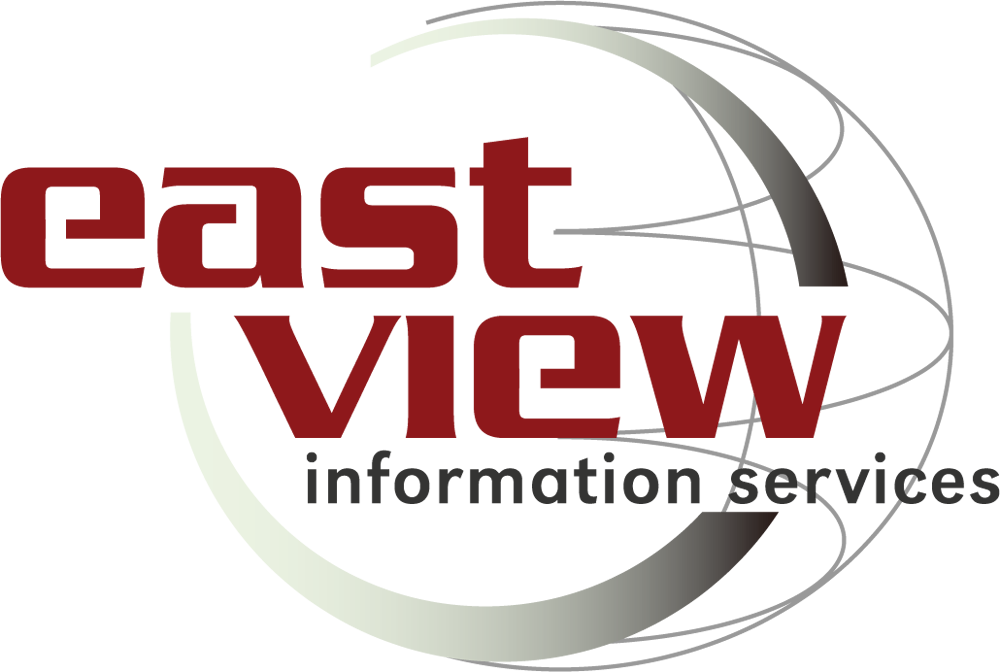БИОЛОГИЧЕСКАЯ АКТИВНОСТЬ КУРКУМИНА И ПЕРСПЕКТИВЫ ЕГО ФАРМАКОЛОГИЧЕСКОГО ИСПОЛЬЗОВАНИЯ

Аннотация
Куркумин, полифенольный пигмент из корневища Curcuma longa, обладающий антиоксидантными свойствами, эффективно воздействует на разные внутриклеточные сигнальные пути, оказывая противовоспалительное, иммуномодулирующее, противораковое, нейропротекторное, гепатопротекторное и противовирусное действие. Его эффективность и безопасность у онкологических пациентов отдельно или в сочетании с другими противораковыми препаратами доказана в нескольких клинических исследованиях. Однако лечебное применение куркумина и его аналогов ограничено химической нестабильностью и низкой пероральной биодоступностью, что определяет актуальность использования нанотехнологий для получения новых лекарственных форм куркумина.
Литература
Sharifi-Rad J, Rayess YE, Rizk AA, Sadaka C, Zgheib R, Zam W, Sestito S, Rapposelli S, Neffe-Skocińska K, Zielińska D, Salehi B, Setzer WN, Dosoky NS, Taheri Y, Beyrouthy ME, Martorell M, Ostrander EA, Suleria HAR, Cho WC, Maroyi A, Martins N. Turmeric and Its Major Compound Curcumin on Health: Bioactive Effects and Safety Profiles for Food, Pharmaceutical, Biotechnological and Medicinal Applications. Front Pharmacol. 2020;11:01021. https://doi.org/10.3389/fphar.2020.01021.
Buckingham J, editor. Dictionary of Natural Products on DVD. London: Chapman & Hall/CRC; 2018. 480 p.
Anand P, Kunnumakkara AB, Newman RA, Aggarwal BB. Bioavailability of Curcumin: Problems and Promises. Mol Pharmaceut. 2007;4:807-818. https://doi.org/10.1021/mp700113r.
Landis-Piwowar KR, Iyer NR. Cancer chemoprevention: current state of the art. Cancer Growth Metastasis. 2014;7:19-25. https://doi.org/10.4137/CGM.S11288.
Rodrigues FC, Anil Kumar NV, Thakur G. Developments in the anticancer activity of structurally modified curcumin: An up-to-date review. European Journal of Medicinal Chemistry. 2019;177:76-104. https://doi.org/10.1016/j.ejmech.2019.04.058.
Gupta SC, Prasad S, Kim JH, Patchva S, Webb LJ, Priyadarsini IK, Aggarwal BB. Multitargeting by curcumin as revealed by molecular interaction studies. Nat Prod Rep. 2011;28(12):1937-1955. https://doi.org/10.1039/c1np00051a.
Coelho MR, Romi MD, Ferreira DMTP, Zaltman C, Soares-Mota M. The Use of Curcumin as a Complementary Therapy in Ulcerative Colitis: A Systematic Review of Randomized Controlled Clinical Trials. Nutrients. 2020;12(8):2296. https://doi.org/10.3390/nu12082296.
Baliga MS, Joseph N, Venkataranganna MV, Saxena A, Ponemone V, Fayad R. Curcumin, an active component of turmeric in the prevention and treatment of ulcerative colitis: Preclinical and clinical observations. Food Funct. 2012;3(11):1109-1117. https://doi.org/10.1039/c2fo30097d.
Yang Z, Liu W, Zhou X, Zhu X, Suo F, Yao S. The effectiveness and safety of curcumin as a complementary therapy in inflammatory bowel disease: A protocol of systematic review and meta-analysis. Medicine (Baltimore). 2020;99(43):e22916. https://doi.org/10.1097/MD.0000000000022916.
Gupta SC, Patchva S, Koh W, Aggarwal B.B. Discovery of curcumin, a component of the golden spice, and its miraculous biological activities. Clin Exp Pharmacol Physiol. 2012;39(3):283-299. https://doi.org/10.1111/j.1440-1681.2011.05648.x.
Moghadamtousi SZ, Kadir HA, Hassandarvish P, Tajik H, Abubakar S, Zandi K. A review on antibacterial, antiviral, and antifungal activity of curcumin. Biomed Res Int. 2014;2014:186864. https://doi.org/10.1155/2014/186864.
Šudomová M, Hassan STS. Nutraceutical Curcumin with Promising Protection against Herpesvirus Infections and Their Associated Inflammation: Mechanisms and Pathways. Microorganisms. 2021;9(2):292. https://doi.org/10.3390/microorganisms9020292.
Nelson KM, Dahlin JL, Bisson J, Graham J, Pauli GF, Walters MA. The Essential Medicinal Chemistry of Curcumin. Journal of Medicinal Chemistry. 2017;60(5):1620-1637. https://doi.org/10.1021/acs.jmedchem.6b00975.
Gera M, Sharma N, Ghosh M, Huynh DL, Lee SJ, Min T, Kwon T, Jeong DK. Nanoformulations of curcumin: an emerging paradigm for improved remedial application. Oncotarget. 2017;8(39):66680-66698. https://doi.org/10.18632/oncotarget.19164.
Yeung AWK, Horbańczuk M, Tzvetkov NT, Mocan A, Carradori S, Maggi F, Marchewka J, Sut S, Dall’Acqua S, Gan RY, Tancheva LP, Polgar T, Berindan-Neagoe I, Pirgozliev V, Šmejkal K, Atanasov AG. Curcumin: total-scale analysis of the scientific literature. Molecules. 2019;24(7):1393. https://doi.org/10.3390/molecules24071393.
Wright JS. Predicting the antioxidant activity of curcumin and curcuminoids. J. Mol. Structure: THEOCHEM. 2002;591:207-217. https://doi.org/10.1016/S0166-1280(02)00242-7.
Priyadarsini KI, Maity DK, Naik GH, Kumar MS, Unnikrishnan MK, Satav JG, Mohan H. Role of phenolic O-H and methylene hydrogen on the free radical reactions and antioxidant activity of curcumin. Free Radic Biol Med. 2003;35(5):475-484. https://doi.org/10.1016/S0891-5849(03)00325-3.
Jovanovic SV, Steenken S, Boone CW, Simic MG. H-Atom Transfer Is A Preferred Antioxidant Mechanism of Curcumin. J Am Chem Soc. 1999;121(41):9677-9681. https://doi.org/10.1021/ja991446m.
Nardo L, Paderno R, Andreoni A, Másson M, Haukvik T, Tonnesen HH. Role of H-bond formation in the photoreactivity of curcumin. Spectroscopy. 2008;22:187-198. https://doi.org/10.1155/2008/928407.
Ak T, Gulcin I. Antioxidant and radical scavenging properties of curcumin. Chem Biol Interact. 2008;174(1):27-37. https://doi.org/10.1016/j.cbi.2008.05.003.
Tomeh MA, Hadianamrei R, Zhao X. A Review of Curcumin and Its Derivatives as Anticancer Agents. Int J Mol Sci. 2019;20(5):1033. https://doi.org/10.3390/ijms20051033.
Potapovich AI, Shutova TG, Kostyuk TV, Kostyuk VA. Sposobnost prirodnogo himioprofilakticheskogo agenta kurkumina funkcionirovat kak jeffektivnyj UF-fotosensibilizator [The ability of the natural chemoprophylactic agent curcumin to function as an effective UV photosensitizer]. Zhurnal Belorusskogo gosudarstvennogo universiteta. Biologija [Journal of the Belarusian State University. Biology]. 2021;3:28-37. https://doi.org/10.33581/2521-1722-2021-3-28-37. (Russian).
Aggarwal BB, Sung B. Pharmacological basis for the role of curcumin in chronic diseases: an age-old spice with modern targets. Trends Pharmacol Sci. 2009;30(2):85-94. https://doi.org/10.1016/j.tips.2008.11.002.
Aggarwal BB, Shishodia S, Takada Y, Banerjee S, Newman RA, Bueso-Ramos CE, Price JE. Curcumin suppresses the paclitaxel-induced nuclear factor-kappaB pathway in breast cancer cells and inhibits lung metastasis of human breast cancer in nude mice. Clin Cancer Res. 2005;11(20):7490-7498. https://doi.org/10.1158/1078-0432.CCR-05-1192.
Panahi Y, Rahimnia AR, Sharafi M, Alishiri G, Saburi A, Sahebkar A. Curcuminoid treatment for knee osteoarthritis: a randomized double-blind placebo-controlled trial. Phytother Res. 2014;28(11):1625-1631. https://doi.org/10.1002/ptr.5174.
Panahi Y, Saadat A, Beiraghdar F, Sahebkar A. Adjuvant therapy with bioavailability-boosted curcuminoids suppresses systemic inflammation and improves quality of life in patients with solid tumors: a randomized double-blind placebo-controlled trial. Phytother Res. 2014;28(10):1461-1467. https://doi.org/10.1002/ptr.5149.
Cianciulli A, Calvello R, Porro C, Trotta T, Salvatore R, Panaro MA. PI3k/Akt signalling pathway plays a crucial role in the anti-inflammatory effects of curcumin in LPSactivated microglia. Int Immunopharmacol. 2016;36:282-290. https://doi.org/10.1016/j.intimp.2016.05.007.
Sies H. Oxidative Stress: Eustress and Distress in Redox Homeostasis. In: Fink G, editor. Stress: Physiology, Biochemistry, and Pathology. Oxford: Academic Press; 2019. Ch. 13; p. 153-163. https://doi.org/10.1016/B978-0-12-813146-6.00013-8.
Yang H, Huang S, Wei Y, Cao S, Pi C, Feng T, Liang J, Zhao L, Ren G. Curcumin Enhances the Anticancer Effect Of 5-fluorouracil against Gastric Cancer through DownRegulation of COX-2 and NF- kB Signaling Pathways. J Cancer. 2017;8(18):3697-3706. https://doi.org/10.7150/jca.20196.
Yance DRJr, Sagar SM. Targeting angiogenesis with integrative cancer therapies. Integr Cancer Ther. 2006;5(1):9-29. https://doi.org/10.1177/1534735405285562.
Astinfeshan M, Rasmi Y, Kheradmand F, Karimipour M, Rahbarghazi R, Aramwit P. Curcumin inhibits angiogenesis in endothelial cells using downregulation of the PI3K/Akt signaling pathway. Food Biosci. 2019;29:86-93. https://doi.org/10.1016/j.fbio.2019.04.005.
Kandoth C, Mclellan MD, Vandin F, Ye K, Niu B, Lu C, Xie M, Zhang Q, McMichael JF, Wyczalkowski MA. Mutational landscape and significance across 12 major cancer types. Nature. 2013;502(7471):333-339. https://doi.org/10.1038/nature12634.
Hermeking H. p53 enters the microRNA world. Cancer Cell. 2007;12(5):414-418. https://doi.org/10.1016/j.ccr.2007.10.028.
Ye M, Zhang J, Zhang J, Miao Q, Yao L, Zhang J. Curcumin promotes apoptosis by activating the p53-miR-192-5p/215-XIAP pathway in non-small cell lung cancer. Cancer Lett. 2015;357(1):196-205. https://doi.org/10.1016/j.canlet.2014.11.028.
Ravindran J, Prasad S, Aggarwal BB. Curcumin and Cancer Cells: How Many Ways Can Curry Kill Tumor Cells Selectively? The AAPS Journal. 2008;11(3):495-510. https://doi.org/10.1208/s12248-009-9128-x.
Chiu TL, Su CC. Curcumin inhibits proliferation and migration by increasing the Bax to Bcl-2 ratio and decreasing NF-kappaBp65 expression in breast cancer MDA-MB-231 cells. Int J Mol Med. 2009;23:469-475. https://doi.org/10.3892/ijmm_00000153.
Marquardt JU, Gomez-Quiroz L, Arreguin Camacho LO, Pinna F, Lee YH, Kitade M, Dominguez MP, Castven D, Breuhahn K, Conner EA. Curcumin effectively inhibits oncogenic NF-kappaB signaling and restrains stemness features in liver cancer. J Hepatol. 2015;63(3):661-669. https://doi.org/10.1016/j.jhep.2015.04.018.
Yang J, Song S, Li J, Liang T. Neuroprotective effect of curcumin on hippocampal injury in 6-OHDA-induced Parkinson’s disease rat. Pathol Res Pract. 2014;210(6):357-362. https://doi.org/10.1016/j.prp.2014.02.005.
Chen N, Geng Q, Zheng J, He S, Huo X, Sun X. Suppression of the TGF-beta/Smad signaling pathway and inhibition of hepatic stellate cell proliferation play a role in the hepatoprotective effects of curcumin against alcohol-induced hepatic fibrosis. Int J Mol Med. 2014;34(4):1110-1116. https://doi.org/10.3892/ijmm.2014.1867.
Goozee KG, Shah TM, Sohrabi HR, Rainey-Smith SR, Brown B, Verdile G, Martins RN. Examining the potential clinical value of curcumin in the prevention and diagnosis of Alzheimer’s disease. Br J Nutr. 2016;115(3):449-465. https://doi.org/10.1017/S0007114515004687.
Ganesh P, Karthikeyan R, Muthukumaraswamy A, Anand J. A Potential Role of Periodontal Inflammation in Alzheimer’s Disease: A Review. Oral Health Prev Dent. 2017;15(1):7-12. https://doi.org/10.3290/j.ohpd.a37708.
Rahmani S, Asgary S, Askari G, Keshvari M, Hatamipour M, Feizi A, Sahebkar A. Treatment of Non-alcoholic Fatty Liver Disease with Curcumin: A Randomized Placebocontrolled Trial. Phytother Res. 2016;30:1540-1548. https://doi.org/10.1002/ptr.5659.
Tung BT, Hai NT, Son PK. Hepatoprotective effect of Phytosome Curcumin against paracetamol-induced liver toxicity in mice. Braz J Pharm Sci. 2017;53(1):e16136. https://doi.org/10.1590/s2175-97902017000116136.
Macı́as-Pérez JR, Vázquez-López BJ, Muñoz-Ortega MH, Aldaba-Muruato LR, Martı́nez-Hernández SL, SánchezAlemán E, Ventura-Juárez J. Curcuminand a/b- Adrenergic Antagonists Cotreatment Reverse Liver Cirrhosis in Hamsters: Participation of Nrf-2 and NF-kB. J Immunol Res. 2019;2019:3019794. https://doi.org/10.1155/2019/3019794.
Peng X, Dai C, Liu Q, Li J, Qiu J. Curcumin Attenuates on Carbon Tetrachloride-Induced Acute Liver Injury in Mice via Modulation of the Nrf2/HO-1 and TGF-beta1/Smad3 Pathway. Molecules. 2018;23(1):215. https://doi.org/10.3390/molecules23010215.
Farzaei MH, Zobeiri M, Parvizi F, El-Senduny FF, Marmouzi I, Coy-Barrera E, Naseri R, Nabavi SM, Rahimi R, Abdollahi M. Curcumin in Liver Diseases: A Systematic Review of the Cellular Mechanisms of Oxidative Stress and Clinical Perspective. Nutrients. 2018;10(7):855. https://doi.org/10.3390/nu10070855.
Afrin R, Arumugam S, Rahman A, Wahed MI, Karuppagounder V, Harima M, Suzuki H, Miyashita S, Suzuki K, Yoneyama H, Ueno K, Watanabe K. Curcumin ameliorates liver damage and progression of NASH in NASH-HCC mouse model possibly by modulating HMGB1-NF-kappaB translocation. Int Immunopharmacol. 2017;44:174-182.https://doi.org/10.1016/j.intimp.2017.01.016.
Naksuriya O, Okonogi S, Schiffelers RM, Hennink WE. Curcumin nanoformulations: A review of pharmaceutical properties and preclinical studies and clinical data related to cancer treatment. Biomaterials. 2014;35(10):3365-3383. https://doi.org/10.1016/j.biomaterials.2013.12.090.
Shutova TG. Nano- i mikrokontejnery na osnove biopolimerov i biologicheski aktivnyh soedinenij [Nano- and microcontainers based on biopolymers and biologically active compounds]. Izvestija Nacionalnoj akademii nauk Belarusi. Serija himicheskih nauk [Proceeding of the National Academy of Sciences of Belarus. Chemical series]. 2013;4:51-61. (Russian).
Dende C, Meena J, Nagarajan P, Nagaraj VA, Panda AK, Padmanaban G. Nanocurcumin is superior to native curcumin in preventing degenerative changes in Experimental Cerebral Malaria. Sci Rep. 2017;7(1):10062. https://doi.org/10.1038/s41598-017-10672-9.






























